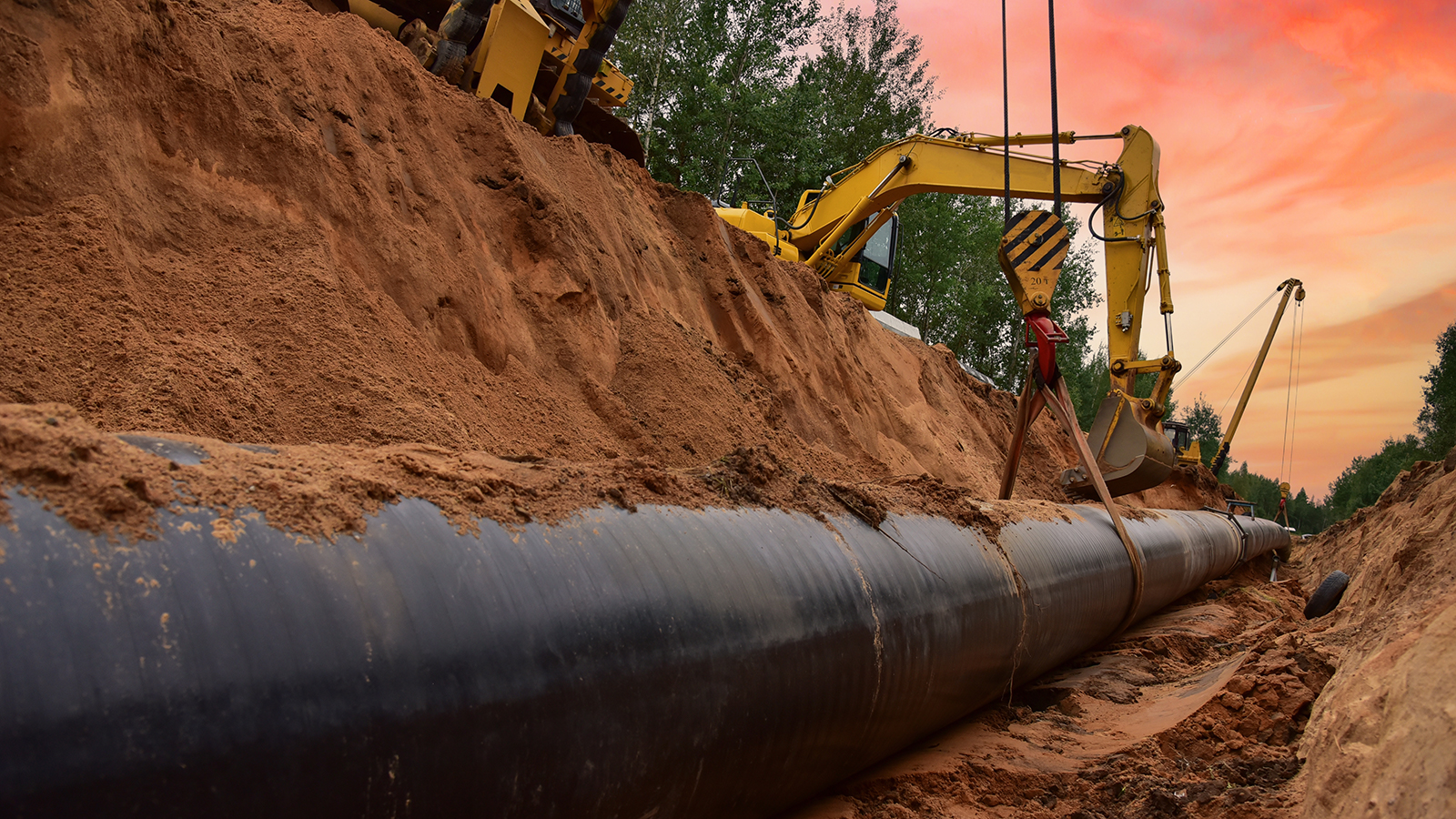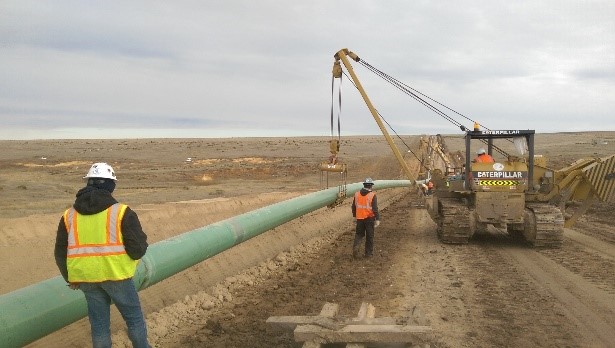How Creek Pipe Company Helps Cities Prepare for Water Scarcity
Revealing the most up to date Developments in Pipes for Reliable Water Administration
The evolution of pipeline innovation is reshaping water monitoring approaches. Current technologies, especially in clever sensing unit modern technology and leak detection systems, promise improved efficiency and sustainability. These developments allow real-time tracking and predictive maintenance, addressing critical water challenges. As communities endeavor for resilience, the duty of eco-friendly materials comes to be significantly considerable - Creek Pipe Pipeline Construction. What various other developments are on the horizon that could better change our technique to water source administration?
Advancements in Smart Sensing Unit Innovation
As water administration systems end up being increasingly complicated, innovations in clever sensor technology play an important function in improving performance and sustainability. These sensing units enable real-time tracking of water quality, flow prices, and stress levels, supplying essential information for effective administration. By incorporating Web of Things (IoT) abilities, clever sensing units promote remote access and data analytics, permitting drivers to make educated choices swiftly.Moreover, predictive maintenance ends up being feasible via the use of sophisticated algorithms that assess sensor data to forecast potential failures prior to they happen. This positive strategy decreases downtime and minimizes repair service prices. Furthermore, smart sensing units add to the preservation of water sources by detecting leaks and abnormalities in the system, making sure prompt action is taken to minimize waste. Generally, the application of wise sensor technology in water administration pipes notes a substantial step in the direction of maximizing resource use and promoting ecological sustainability.
Eco-Friendly Materials for Sustainable Pipes
Ingenious techniques in water administration pipelines progressively include environmentally friendly products to enhance sustainability. These products purpose to minimize ecological influence while preserving sturdiness and effectiveness. Biodegradable plastics, for example, are obtaining traction as feasible alternatives to conventional PVC, reducing lasting waste in garbage dumps. Additionally, recycled materials, such as reclaimed rubber and metal compounds, are being utilized to produce durable pipe systems that substantially reduced carbon footprints.Moreover, bio-based materials stemmed from renewable energies are becoming encouraging options, using both resilience and minimized reliance on nonrenewable fuel sources. Makers are likewise discovering ingenious finishings that improve corrosion resistance while staying environmentally benign. These improvements not just promote a round economic situation however also line up with worldwide sustainability goals. As water scarcity becomes a pushing concern, the fostering of green materials in pipeline construction represents a critical action towards liable water monitoring and resource preservation.

Real-Time Tracking and Information Analytics
While standard water management systems typically depend on regular evaluations, the assimilation of real-time tracking and data analytics has transformed the landscape of pipeline administration. This innovative strategy makes it possible for operators to constantly track water quality, flow, and stress, helping with prompt responses to potential problems - Creek Pipe Company. By leveraging innovative sensing units and IoT innovation, information is gathered and assessed immediately, giving actionable insights that enhance decision-making processes.Real-time analytics not only boosts functional performance yet also aids in source allowance, guaranteeing that water distribution is optimized. Anticipating analytics can forecast demand patterns, permitting aggressive measures to be implemented, thereby decreasing waste and enhancing sustainability efforts. Furthermore, the capability to picture information with dashboards help in determining patterns and abnormalities, which is essential for preserving the stability of water systems. Subsequently, this shift towards real-time tracking represents a considerable advancement in making certain the efficiency and sustainability of water management pipelines
Innovations in Leakage Detection Systems
The surge of real-time tracking has actually led the means for innovations in leakage detection systems within water administration pipelines. Modern technologies, consisting of you can try these out acoustic sensing units and fiber optic cable televisions, make it possible for drivers to recognize leaks with unprecedented accuracy. Acoustic sensors, for instance, identify acoustic waves produced by leaving water, enabling instant area pinpointing. In comparison, fiber optic systems use temperature level changes along the pipe to reveal anomalies indicative of leaks.Additionally, artificial intelligence formulas are being used to analyze information accumulated from these sensing units, enhancing anticipating maintenance capacities. By processing continue reading this historic data and determining patterns, these systems can anticipate potential leakage areas before they take place, minimizing water loss and decreasing fixing costs.Furthermore, integration with geographic details systems (GIS) enables far better visualization and monitoring of pipe networks, enhancing the action to found leaks. Jointly, these technologies signify a transformative shift in just how water monitoring systems attend to leak discovery.
Improved Resilience and Long Life of Pipe Materials
Innovations in pipeline products are considerably boosting the sturdiness and durability of water management systems. Cutting-edge materials, such as high-density polyethylene (HDPE) and reinforced concrete, are showing to be a lot more immune to deterioration, stress, and environmental stressors. These modern-day materials not just extend the life expectancy of pipelines but likewise lower maintenance prices and the frequency of repairs.Additionally, improvements in composite products, which incorporate various materials to maximize efficiency, are being utilized for their premium strength-to-weight ratio and flexibility. This enables pipelines to much better withstand severe weather condition problems and ground movements.Moreover, basics the intro of safety coatings better boosts the resilience of pipelines versus chemical destruction and physical wear. As a result, water management systems are ending up being more lasting and reliable, guaranteeing the effective shipment of water sources while minimizing the ecological impact connected with frequent pipeline replacements.
Integration of IoT in Water Circulation Networks
As water circulation networks advance, the assimilation of the Net of Points (IoT) is transforming the means water sources are managed and kept track of. Smart sensors and connected tools enable real-time data collection on water circulation, stress, and high quality, helping with positive management of infrastructure. This advancement enables immediate detection of leaks and abnormalities, decreasing water loss and lowering functional costs.Furthermore, IoT technology sustains anticipating maintenance by analyzing use patterns, which assists utilities intend repair services and upgrades better. Enhanced interaction between tools warranties seamless information transmission, permitting boosted decision-making based on accurate, current information.Additionally, the assimilation of IoT fosters water preservation efforts by giving customers with insights right into their consumption behaviors, motivating even more accountable use. Generally, the IoT transforms water circulation networks, promoting effectiveness and sustainability in water management techniques.
Case Researches: Success Stories in Water Monitoring Solutions
Many municipalities and companies have actually successfully implemented innovative water management services, showcasing the performance of modern-day innovations in attending to water shortage and circulation challenges. One notable instance is the city of San Diego, which incorporated advanced metering facilities (AMI) to keep track of water use in real-time, causing a 10% decrease in consumption. Creek Pipe Midland. Similarly, the water authority in Cape Community took on a clever leak detection system that identified and repaired leakages quickly, substantially minimizing water loss during the serious dry spell of 2017. In Australia, using recycled water supply in city locations has actually proven effective, permitting lasting watering methods and minimized need on safe and clean water resources. These study highlight that by leveraging modern technology and cutting-edge strategies, communities can improve their water administration techniques, making certain long-term sustainability and resilience despite growing water obstacles
Regularly Asked Inquiries
Just how Do These Advancements Impact Water Energy Costs?
The technologies in pipeline innovation greatly lower water loss and operational ineffectiveness. Water utilities experience reduced maintenance and manufacturing costs, ultimately leading to lower expenditures for consumers and boosted sustainability in water administration methods.
What Are the Environmental Effects of Pipeline Installment?
The environmental impacts of pipeline setup can include environment interruption, dirt disintegration, and prospective water contamination. Modern-day techniques aim to alleviate these results, promoting lasting practices in construction and long-lasting ecological conservation.

Exist Government Rules Affecting Pipe Innovations?

Federal government regulations considerably influence pipeline advancements, mandating conformity with environmental criteria and safety protocols. These policies aim to mitigate eco-friendly risks while promoting improvements in modern technology, ultimately forming the future of pipeline facilities and water monitoring techniques.

How Can Consumers Take Advantage Of These Pipeline Developments?
Consumers can gain from these pipeline advancements through boosted water high quality, decreased costs, enhanced integrity, and enhanced accessibility to tidy water. Advancements lead to extra efficient resource monitoring, eventually cultivating sustainable practices within communities.
What Future Patterns Can We Expect in Water Administration Pipelines?
Future trends in water management pipelines may include boosted automation, smart surveillance technologies, and lasting products. These advancements intend to improve effectiveness, lower leaks, and improve general water quality, making sure source preservation for future generations. As water distribution networks advance, the integration of the Internet of Points (IoT) is changing the way water resources are managed and checked. Various communities and organizations have actually effectively carried out ingenious water management remedies, showcasing the effectiveness of modern innovations in attending to water deficiency and distribution obstacles. The water authority in Cape Town took on a wise leakage discovery system that identified and fixed leaks rapidly, substantially decreasing water loss during the extreme dry spell of 2017. In Australia, the usage of recycled water systems in city areas has verified effective, enabling for lasting irrigation practices and decreased demand on safe and clean water sources. Consumers can profit from these pipe developments via enhanced water high quality, decreased prices, enhanced integrity, and raised accessibility to clean water.